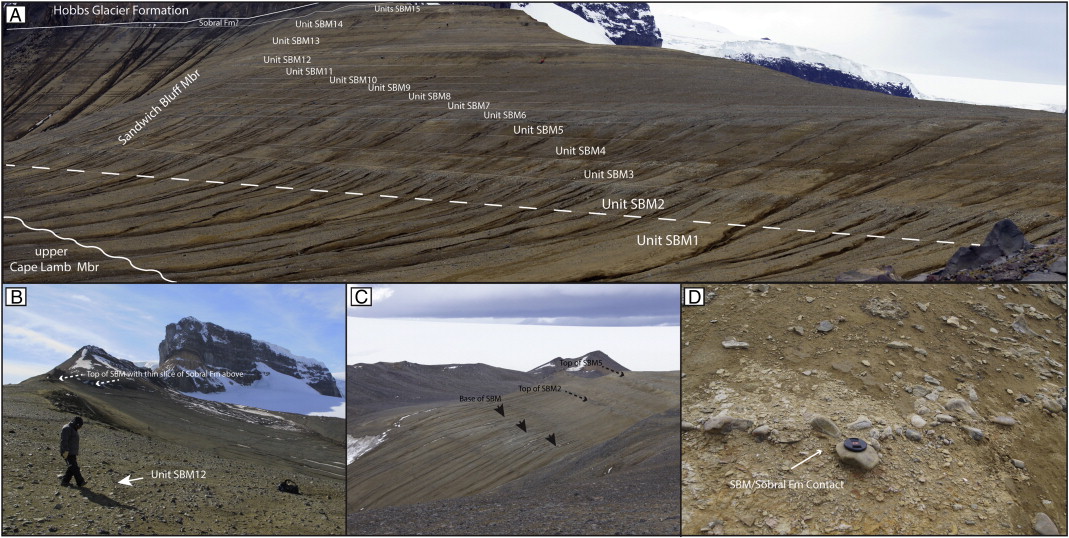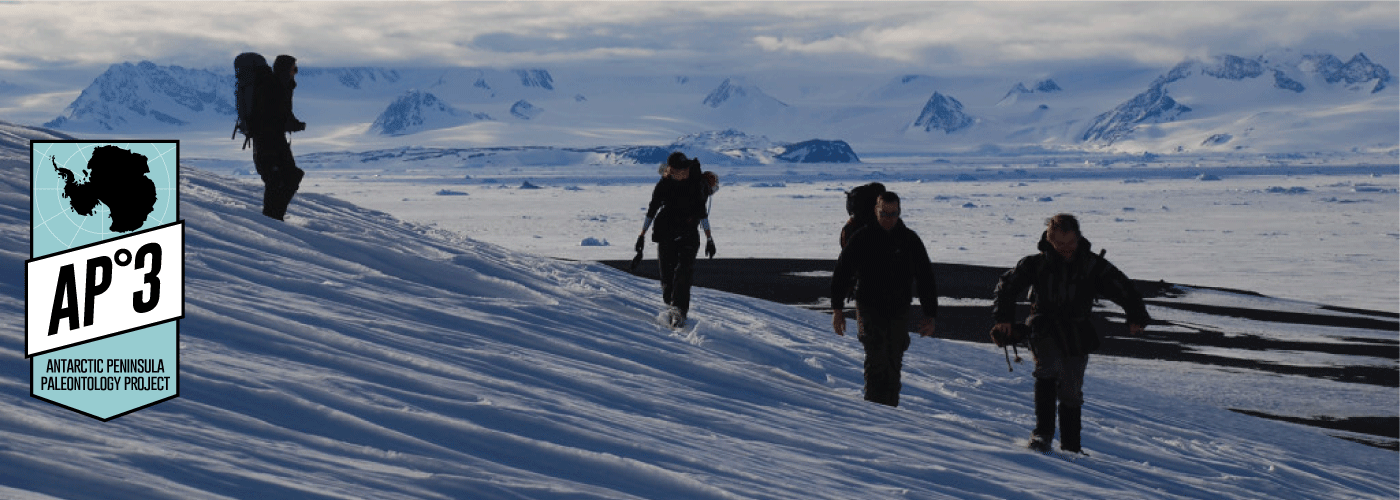
Synchrotron image (color) overlaid on a light-microscope image of fossil wood from the Snow Hill Island Formation. Warmer colors indicate higher concentration of lignin-like organic materials.
Project geologist Eric Roberts and his collaborators continue to make significant discoveries regarding the geology and ancient environment of Vega Island based on data he collected during our 2011 and 2016 expeditions. In particular, Eric has conducted strontium (Sr) isotopic analyses on fossil clam shells that he collected from throughout the Vega rock sequence, but most importantly from the lowermost layer of the Sandwich Bluff Member of the López de Bertodano Formation. This layer is of particular interest because it is the source of the duck-like fossil bird Vegavis, the only definitive representative of a modern avian group from the Mesozoic Era. The Sr values that Eric obtained support the longstanding hypothesis that the Sandwich Bluff Member and its fossils are at least predominantly latest Cretaceous in age.
Making use of samples recovered on Vega Island, Eric and colleagues are also studying the preservation of Cretaceous fossil-bearing deposits using synchrotron Fourier transform infrared microspectroscopy at the Australian Synchrotron. Analyses of fossil wood from the Cape Lamb Member of the Snow Hill Island Formation have established the presence of original organic material in these specimens. The image at right shows relative concentration of materials with spectral properties similar to lignin, a molecule that makes up the cell walls of wood and other plant tissues.
Samples collected for geological analysis during the 2016 AP3 expedition are still under study by Roberts, Zubair Jinnah, and colleagues.

Geological and paleontological results from previous seasons were shared in a 2014 paper by the AP3 team entitled Stratigraphy and vertebrate paleoecology of Upper Cretaceous-?lowest Paleogene strata on Vega Island, Antarctica. Eric also shared some of these results during his presentation at the Fourth International Palaeontological Congress in Mendoza, Argentina in 2014.
